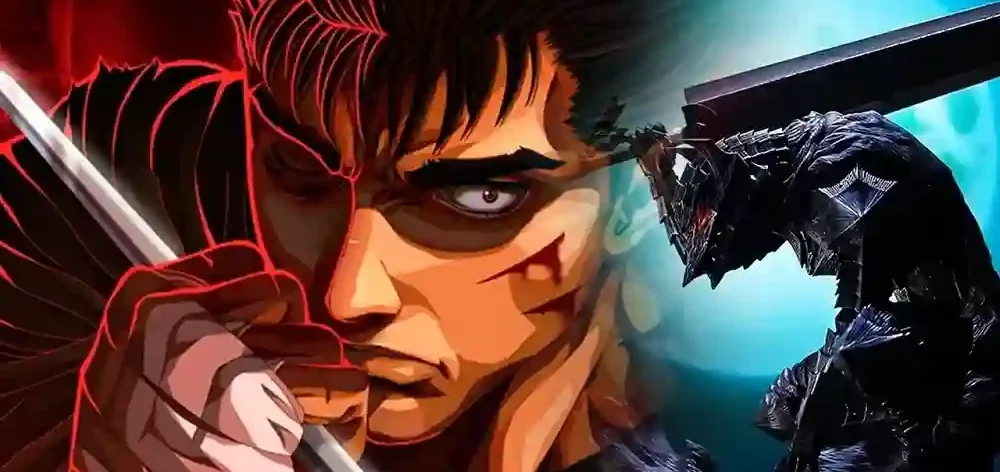Kentaro Miura’s “Berserk” is a manga series that has transcended geographical and cultural boundaries, captivating readers worldwide with its dark fantasy narrative and complex characters. While the story is set in a fictional medieval-inspired world, it draws upon a wide range of cultural influences that resonate with a global audience. In this article, we will explore the cultural influences in “Berserk” and how they contribute to the manga’s universal appeal.
Medieval European Aesthetics
One of the most striking cultural influences in “Berserk” is the manga’s aesthetics, which draw heavily from medieval Europe. From the architecture of castles and fortresses to the armor and weaponry worn by the characters, “Berserk” immerses readers in a world reminiscent of the European Middle Ages.
The detailed and historically inspired artistry in “Berserk” adds an element of authenticity to the setting. This medieval European influence resonates with readers from around the world, as it evokes a sense of timelessness and nostalgia for a bygone era. Whether it’s the towering spires of castles or the intricate designs of armor, these elements create a rich and immersive backdrop for the manga’s narrative.
Classical Mythology and Symbolism
“Berserk” also incorporates classical mythology and symbolism into its storytelling. The God Hand, a group of god-like beings that manipulate the destinies of mortals, draws parallels to ancient pantheons and the capricious nature of gods in Greek mythology. The concept of fate, causality, and sacrifice reflects themes found in various mythological traditions.
The use of symbolism, such as the Behelits and their eye-like design, evokes the concept of the “evil eye” present in different cultures. These symbols carry a universal resonance, as they tap into a shared human fascination with the supernatural and the unknown.
The Influence of Japanese Samurai Culture
While “Berserk” primarily draws from European medieval aesthetics, it also incorporates elements of Japanese samurai culture. The protagonist, Guts, wields a massive sword and displays remarkable combat skills reminiscent of samurai warriors. His unwavering determination and mastery of his weapon reflect the disciplined and honorable traits often associated with samurai.
The fusion of European and Japanese influences in Guts’ character and combat style adds a unique dimension to the manga’s cultural tapestry. It appeals to readers who appreciate the blending of diverse traditions and the opportunity to explore the intersection of these influences.
Existential and Philosophical Themes
“Berserk” delves into existential and philosophical themes that resonate with a global audience. The exploration of the human condition, the search for meaning in a chaotic world, and the consequences of personal choices are universal concepts that transcend cultural boundaries.
Readers from various backgrounds can relate to Guts’ existential struggles and his quest for purpose and identity. The moral dilemmas faced by the characters and the examination of the blurred lines between heroism and villainy are themes that provoke thought and discussion across cultures.
The Impact of Kentaro Miura’s Artistry
Kentaro Miura’s artistic style, characterized by intricate and detailed illustrations, is a cultural influence in itself. His meticulous attention to detail and his ability to convey emotions through his artwork transcend language barriers. Miura’s artistry has garnered a global following, with fans from diverse cultural backgrounds appreciating his talent and dedication to his craft.
The Cultural Appeal of Tragic Narratives
Tragedy is a fundamental element of “Berserk’s” narrative, and its universal appeal lies in its exploration of human suffering and resilience. The manga’s themes of betrayal, loss, and the enduring human spirit resonate with readers from different cultures who have experienced their own trials and tribulations.
The universality of tragedy as a storytelling device is evident in the enduring popularity of classic tragedies from various cultures, such as Shakespearean plays, Greek tragedies, and epic tales like the “Mahabharata.” “Berserk” taps into this shared appreciation for narratives that explore the depths of human emotions and the complexities of the human experience.
The Influence of “Berserk” on Global Pop Culture
“Berserk” has left a lasting impact on global pop culture, further highlighting its cultural influence. The manga has inspired video games, anime adaptations, and a dedicated fanbase that spans the globe. The themes, characters, and iconic moments from “Berserk” have become part of the cultural lexicon, transcending their Japanese origins.
In particular, the “Dark Souls” video game series, which draws inspiration from “Berserk,” has gained immense popularity worldwide. The game’s dark and challenging gameplay, coupled with its thematic similarities to the manga, has resonated with gamers from different cultural backgrounds.
Conclusion
“Berserk” stands as a testament to the power of cultural fusion and storytelling to transcend borders. Its blend of European medieval aesthetics, classical mythology, Japanese samurai culture, and existential themes creates a narrative tapestry that resonates with readers from diverse cultural backgrounds. Kentaro Miura’s artistry and the manga’s exploration of universal themes have solidified its place in global pop culture, making “Berserk” a cultural phenomenon with a lasting impact on fans around the world.





